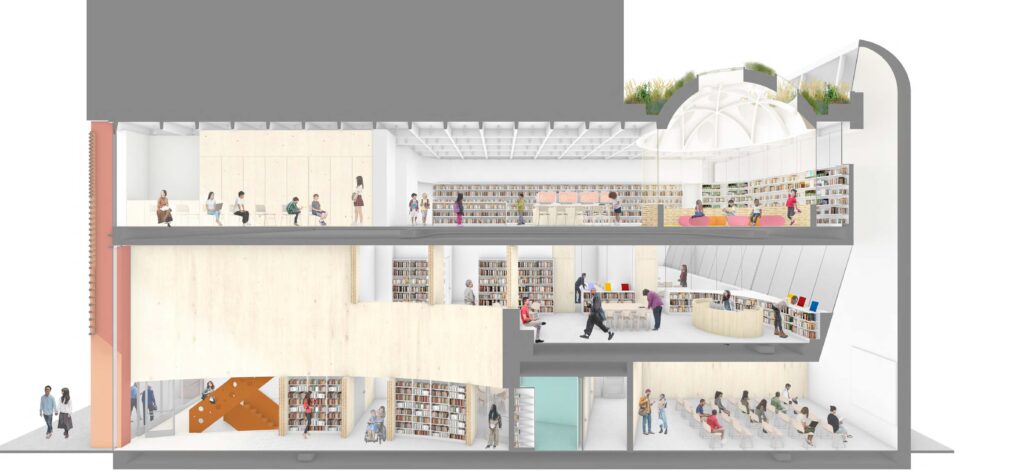Yard Inspects All New Subway Cars Shipped Via Truck, Rail and Barge; Features Direct Link to New York City Transit Tracks, Allowing Modern Trains to Enter System Faster and More Efficiently
Builds on MTA’s Plan To Add More than 1,500 Modern Subway Cars in 2025-29 Capital Plan; Details of the MTA Capital Plan Are Available Here
Three-Year Project Completed on Time and $5.5 Million Under Budget
Governor Kathy Hochul and the Metropolitan Transportation Authority (MTA) announced the opening of the first-of-its-kind Railcar Acceptance and Testing Facility. Delivered on time and under budget, this state-of-the-art complex serves as the first stop for all new subway cars before they are put into service. This facility will help the MTA process new subway cars, work locomotives and other rolling stock more efficiently, helping complete onsite testing so they can enter service more quickly. This comes as the MTA prepares to receive the biggest infusion of new rail cars since systematic capital planning was first introduced more than a generation ago.
“Thanks to funding from congestion pricing and the MTA’s 2025-29 Capital Plan, we are making generational upgrades to our subway fleet,” Governor Hochul said. “Thousands of new, modern cars are set to improve the riding experience for millions of New Yorkers. By streamlining the process needed to get these new cars on the rails and into service, this new facility will ensure that riders feel the benefits of a new and improved subway fleet faster than ever.”
Located near the South Brooklyn Marine Terminal in Sunset Park, the facility can accept rolling stock delivered by truck, rail, or boat. Once accepted, individual cars will be linked together for testing and commissioning on the facility’s in-house tracks. The newly created trains will then be sent via the facility’s direct connection to the subway network to complete further testing and will be entered into revenue service once they pass final inspection. This is the first brand-new, full-scale subway car facility located on a new property that the Authority has added since the Pitkin Yard opened in Brooklyn in 1948.]
The Railcar Acceptance and Testing Facility was completed within its three-year timeline and $5.5 million under budget by utilizing design-build delivery that streamlines project design and management. The MTA realized significant savings through the use of prefabricated building components and precast concrete for the track pit construction, speeding the project’s completion and minimizing cost.
The American Council of Engineering Companies of New York recently awarded the facility the silver medal in the Transportation category at the 2026 Engineering Excellence Awards Competition. This prestigious award recognized the yard’s state-of-the-art design, innovation, complexity and the benefits it will bring to the subway riding public and community as a whole.
The opening of the facility comes as the MTA is actively buying hundreds of modern R211 and R268 subway cars that will eventually replace all R46 and R68 subway cars, which have been in service for decades. The historic $68 billion 2025-29 Capital Plan includes the purchase of 1,500 new subway cars - the largest new investment in rolling stock since the 1980s. New R211 cars are being delivered at a rapid pace, with 750 already delivered and another 860 still to arrive.
First placed into service in March 2023, the R211 features pre-installed security cameras in each car, as well as 58-inch-wide door openings that are eight inches wider than standard door openings on the existing car fleet. These are designed to speed up boarding and reduce the amount of time trains sit in stations. In addition to wider doors, these cars provide additional accessible seating, digital displays that will provide more detailed station-specific information, and brighter lighting and signage, among other features that improve the customer experience.
The R211 is currently in service on the Staten Island Railway, as well as the A, B, C and G lines. There are plans to add the R211 on the D and the Rockaway Park S within the next two years. The R211 is just the start of the MTA’s investment in new subway cars. The MTA Board recently approved the purchase of 378 new R268 subway cars, which feature many of the same amenities as the R211. The R268s will service the MTA’s B division lines beginning in 2028. In addition, the 2025-29 Capital Plan will include the purchase of new cars for the A Division, replacing the existing R62 trains serving the 1, 3 and 6 trains.
These modern cars also assist the MTA in its efforts to upgrade subway lines to Communications-based Train Control (CBTC), the international gold standard of signal systems. All R211s and R268s come equipped with technology that seamlessly integrates with CBTC signals, leading to a better overall commute for millions of daily riders — including more reliable service, fewer delays, more frequent trains and less waiting.
Crews are actively working to complete CBTC upgrades on the A, C, E, F and G lines. Planned work on the Fulton St and Liberty Av Lines of the A and C trains in Brooklyn and Queens and the 6th Av Line of the B, D, F and M trains in Manhattan are being paid for by funds generated from congestion relief. Upcoming CBTC modernization efforts on the A, Rockaway Park S, J and Z trains from the Williamsburg Bridge to Broad St, as well as on the N, Q, R and W trains in Manhattan and Astoria will be financed through the 2025-29 Capital Plan.







